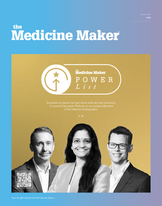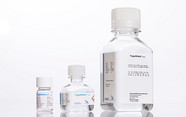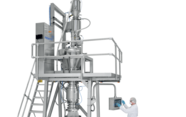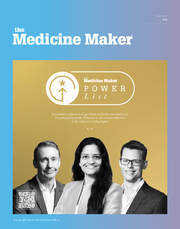
Using AI to Conquer the Undruggable
AI is set to be a key disruptor in the pharma industry. Here are two perspectives on how it could change drug development.
| 2 min read | Opinion
What we asked: “Looking ahead to the next 5–10 years, what will be the key disruptors and/or what can be improved upon in the pharma industry?”

Response from: Anshul Gupte, Vice President of Pharmaceutical Development for PCI Pharma Services
“Over the coming decade, one prominent category likely to drive substantial changes in drug development and manufacturing is AI. Coupled with AI, the areas that bring promising potential include age-appropriate and/or personalized therapies, orphan and rare disorders, real world data-driven decisions related to decentralized clinical trials, and enhanced sustainability in both manufacturing and supply chains.
“Ideally, drug development in the next decade should be driven by advanced delivery of large molecules, nucleic acids, and drug candidates for so-called “undruggable” targets through novel drug delivery technologies. As AI continues to turbo-charge discovery, development, and manufacturing elements, partnerships with CMOs and CDMOs, for example, will become all the more important in optimizing drug product design, development, and logistics for expedited time to market. Considering the advent and rapid proliferation of AI in drug development – and the need to provide patients with life-changing therapies as quickly as possible – augmentation and adaptations to current regulations in areas such as breakthrough, accelerated and fast-track pathways will be necessary.
“Regardless, all signs for the next decade point to customization, with drug manufacturing geared toward targeted, niche medicines produced in multi-product facilities offering potent and highly potent drug-handling capabilities, batch production flexibility, and agile and integrated manufacturing, testing and packaging services that bridge gaps between therapies and patients.
“Finally, the global drug manufacturing community has a shared responsibility to minimize greenhouse emissions, lower waste generation, and reduce water and energy consumption. The increased emphasis on environmental, social and governance issues across various aspects of the pharma sector has been highly encouraging.”

Response from: Gino Ussi, President of Corporate Markets, Elsevier:
“AI has led to a significant shift in the way biopharma and life sciences organizations operate. Elsevier's Corporate Researcher Attitudes Toward AI survey shows that 71 percent of life sciences researchers believe the impact of AI will be transformative to their work with the potential to reduce R&D timelines, identify projects with a higher likelihood of success – e.g. by predicting potential drug efficacy/risk of side effects – and uncover new leads missed with traditional approaches. Taken together, AI has significant potential to help drug developers improve the ROI across this industry.
“Advances in data management have been essential to this transformation over the past decade. From big data and business intelligence to decision-making support and predictive analytics, and now to AI and ML, we have seen a significant improvement in the way biopharma organizations generate, integrate, and interrogate their own data alongside that from external sources to improve multiple stages of the drug discovery process.
“With the establishment of generative AI, we are set to see even more advances in innovation. However, as genAI usage increases in the R&D pipeline, organizations must incorporate foundational data technologies, such as ontologies, to support the future of responsible genAI usage and unlock the full potential of this technology.”
Read over 100 other views on the future of the pharma industry on our special web page.



















